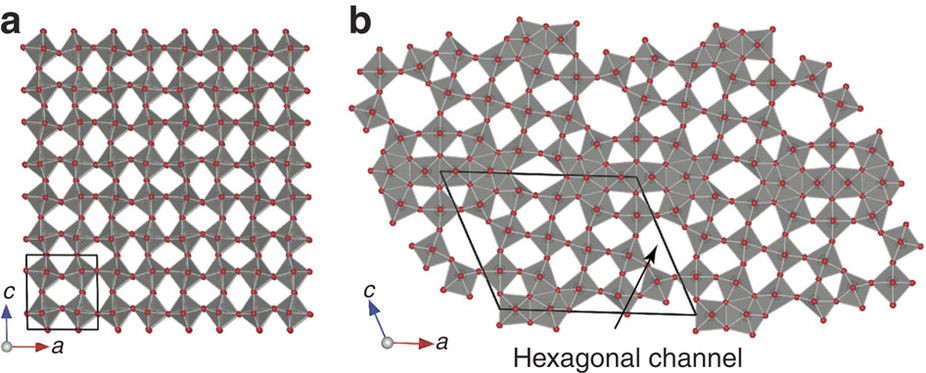
Surface Enhanced Raman Scattering (SERS) has distinguished itself from normal Raman by the introduction of substrate materials. On the surface of SERS substrates, the cross section of Raman scattering from analyte molecules can be greatly enlarged, leading to significant magnification of Raman signals. Today, SERS detection has gained wide application and become one of the most sensitive in-situ spectral detection techniques for surface species.
Semiconducting compounds as SERS substrate have become appealing for their luxuriant compositions and wide applications. However, the generally low SERS enhancement shown by semiconductors seems to be the bottleneck hard to break in the field of SERS research. Searching for outstanding SERS substrate among vast amount of semiconductors based on an in-depth understanding about the particularity of semiconductor materials is a challenge.
Recently, Professor ZHAO Zhigang’s group at Suzhou Institute of Nanotech and Nanobionics (SINANO) of Chinese Academy of Sciences found that oxygen can be the key to unlock the activity of semiconductor as SERS substrates. They realized the enhancement of SERS signals from analyte on semiconductors that once were recognized as none- or weak-SERS active substrate, simply through the stoichiometry-modification of those transition metal compounds by lattice oxygen extraction or incorporation.
The researchers employed vacancy-containing W18O49 sea urchin-like nanoparticles as the substrate material to achieve greatly enhanced SERS effect for the first time on function-rich tungsten oxide material, and the enhancement was further improved by creating surface deficiencies via H2, Ar thermal-reduction, in the rank of the highest sensitivity among semiconducting materials. The results demonstrated that oxygen vacancy could be of crucial importance to the SERS activity of semiconducting oxides.
They then started with MoS2, a typical chalcogenide with rather weak SERS activity, in which the oxygen incorporation could be realized either during the low-temperature hydrothermal synthesis or through the post thermal treatment in air. Oxygen incorporation with proper amount was found to account for the one-million-fold magnified SERS enhancement in comparison with that of the pristine unincorporated MoS2, while further incorporated oxygen into the lattice led to a sharply degraded SERS performance.
Such a strategy of oxygen incorporation has shown its universality in several other chalcogenide compounds as SERS substrates to achieve greatly improved performance, including WSe2, WS2, MoSe2, etc.
The SERS enhancement of semiconductors benefiting from either oxygen extraction or incorporation has already been unified, which is further supported by the results of theoretical calculations. Based on the chemical mechanism (CM) of semiconductor-molecule system, both adding and extracting of oxygen into/from the semiconductor lattice are all proved to be effective means in its band-structure modification.
Deep levels in the bandgap introduced by “oxygen extraction” acts as an springboard for electron transfer, while the increased density of state near Fermi level after “oxygen incorporation” narrows the bandgap, both of which will facilitate the charge carrier generation in a laser-stimulated semiconductor, further contribute to the charge-transfer between substrate and analyte through vibronic coupling, increase the polarization tension of adsorbed molecule, and finally give the increased Raman signals.
The systematic work revealed that under a suitable modulation of the lattice oxygen density in semiconductor oxides, the SERS activity of which can be dramatically promoted. The findings broke the limitation of noble metal substrates in common SERS applications, and provided important clues in the future design strategy for highly-efficient semiconducting SERS substrates.
This work was supported by the National Natural Science Foundation of China, the Outstanding Youth Fund of Jiangsu Province, and the Youth Innovation Promotion Association, Chinese Academy of Sciences. Relative results were published in Nature Communications (2015, 2017).

Figure 1: Crystal structure of (a) stoichiometric WO3 and oxygen-deficit W18O49. (Image by SINANO)

Figure 2: Scheme showing the SERS on MoS2 substrate after oxygen incorporation. (Image by SINANO)

86-10-68597521 (day)
86-10-68597289 (night)

52 Sanlihe Rd., Xicheng District,
Beijing, China (100864)

